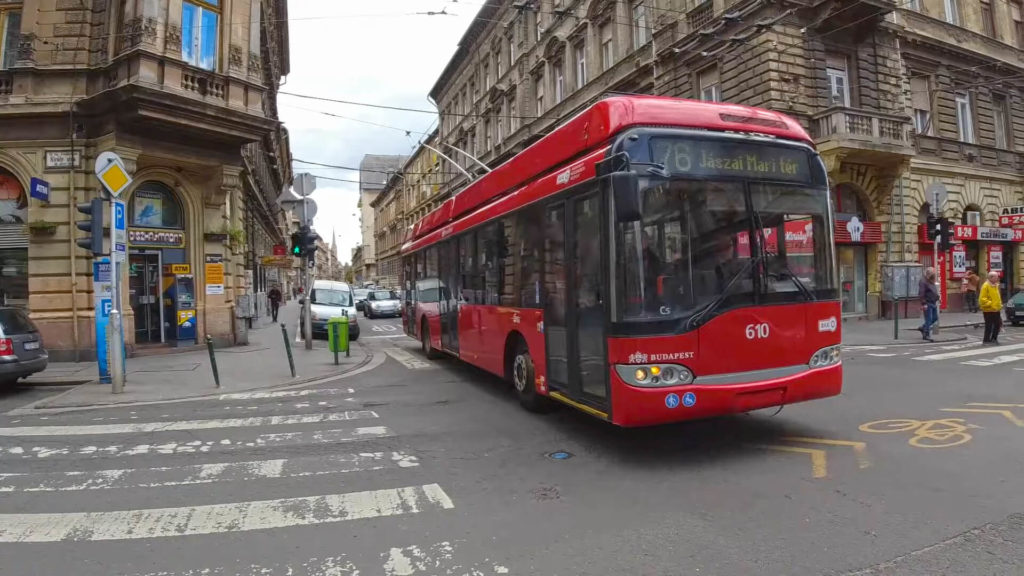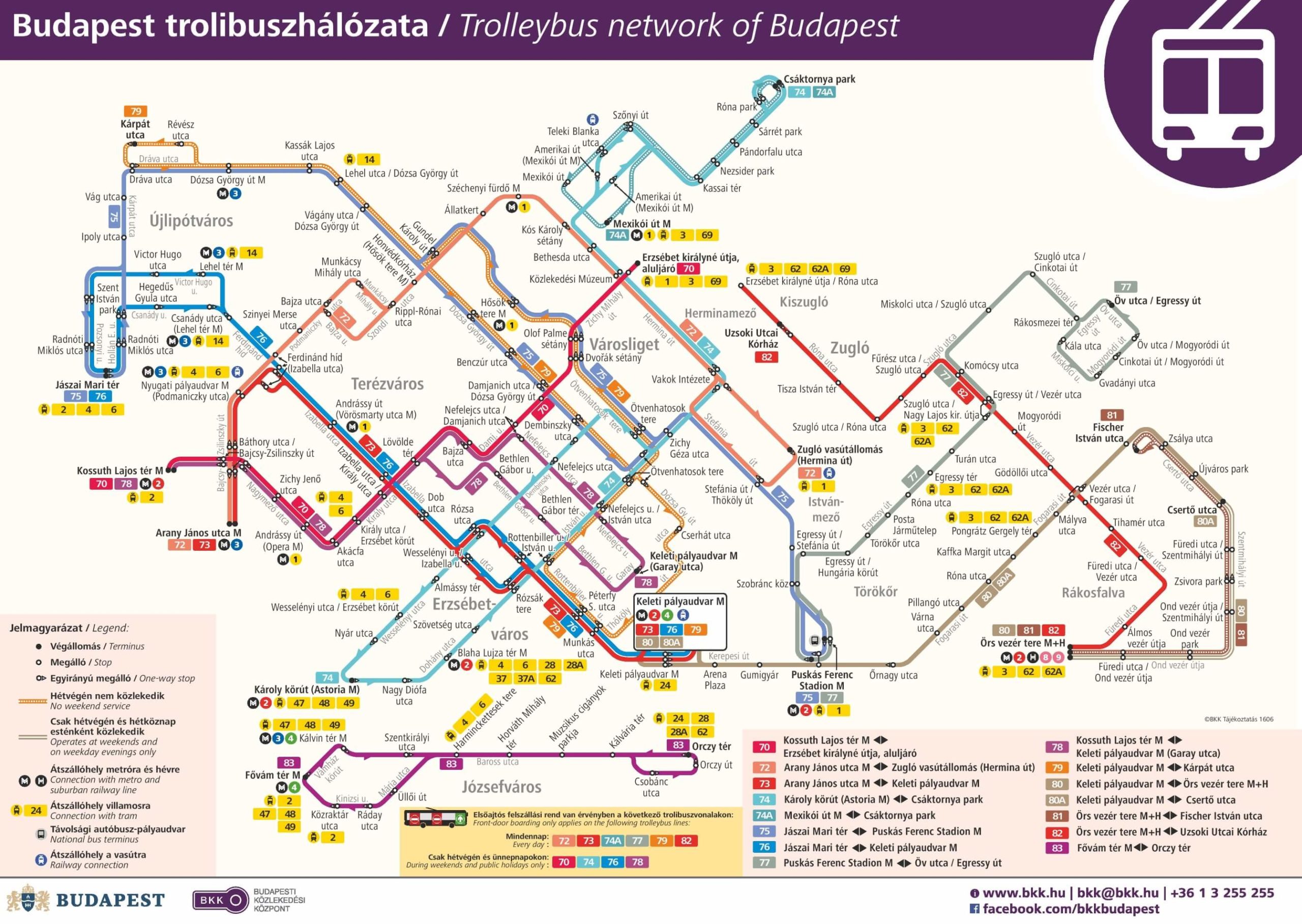Budapest Trolleybus Network

The Origins of Budapest’s Trolleybus Network
The first trolleybus line in Budapest was inaugurated on December 16, 1933, in Óbuda. This 1.6-mile (2.7 km) route was a significant milestone in the development of public transportation in the city. However, during World War II, the line was completely destroyed.
It was not until December 1949 that the trolleybus line no. 70 replaced the tram line no. 10, which ran through some of Budapest’s narrowest streets. The line was given the number 70 to celebrate Stalin’s seventieth birthday. Over the following years, the city created several other trolleybus routes to substitute the tram lines that ran through the city’s most narrow streets.
The Evolution of Budapest’s Trolleybus Network
The trolleybus network in Budapest has undergone several transformations over the years. At the end of the sixties, the government began to replace the old trolleybuses with urban buses. However, the decision was retracted in the seventies, due to the rise of petrol prices.
During the nineties and at the beginning of the twenty-first century, Budapest bought new trolleybuses. However, the economic conditions prevented the city from establishing new lines. Nowadays, trolleybuses are still viable and have not completely superseded all the tram lines.
Trolleybus Lines in Budapest
The trolleybus network in Budapest consists of 15 lines, numbered from 70 to 83. Each line has its unique route, providing access to various parts of the city. The lines differ in length, number of stops, and the type of trolleybus used.
For example, line 72 runs from Jászai Mari tér to Rákospatak-Kertváros, covering a distance of 12.7 km and stopping at 28 stations. On the other hand, line 78 runs from Deák Ferenc tér to Kelenföld vasútállomás, covering a distance of 10.9 km and stopping at 23 stations.
How to Use the Trolleybus Network in Budapest
Using the trolleybus network in Budapest is relatively easy. When you get on a trolleybus, remember to validate your ticket using the validating machines located inside the bus. If you do not have a ticket, you can purchase one from a ticket vending machine.
When you get close to your stop, remember to press the button located near the door to warn the driver that you wish to get off. It is also essential to note that some trolleybuses have multiple doors, and you must exit through the front door.
Trolleybus Ticket Prices in Budapest
Trolleybus ticket prices in Budapest are relatively affordable. A single ticket costs 350 HUF, while a block of ten tickets (called a ’10-pack’) costs 3000 HUF. There are also 24-hour, 72-hour, and seven-day travel cards available for visitors and locals alike.
It is essential to note that ticket inspections are frequent on Budapest’s public transportation system. If you are caught without a valid ticket, you may be subject to a fine.

